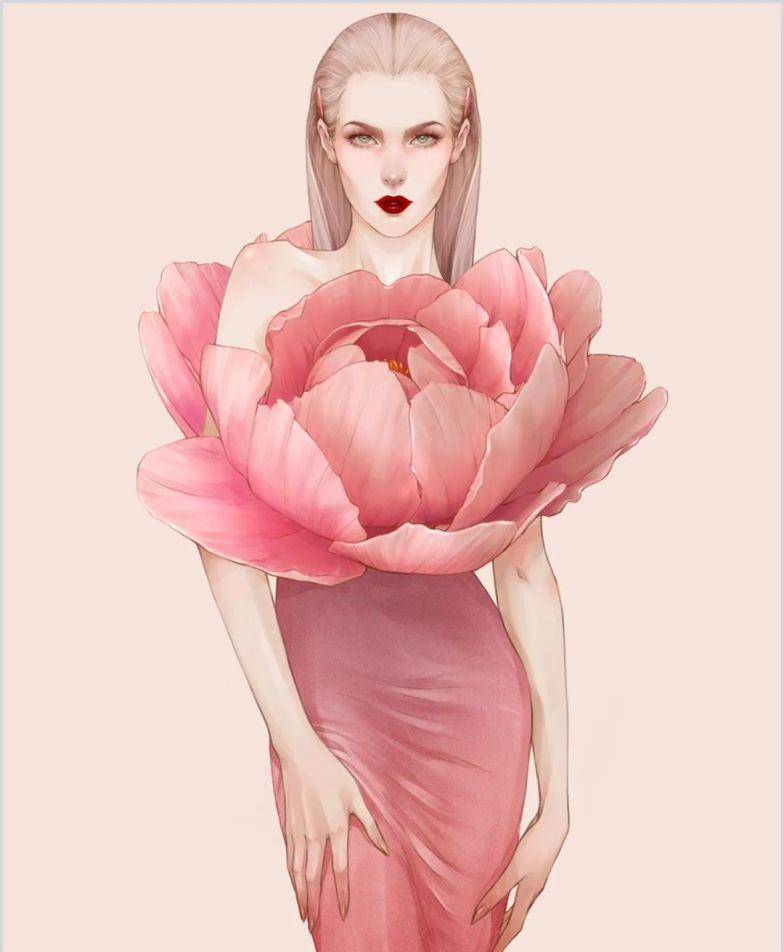The design law is to study the characteristics and laws of formal beauty, that is, to study people's aesthetic feelings about objective things and works of art in form, which is the basis for the creation of art forms, subordinate to the performance of content, and at the same time higher than the apparent category of content, showing aesthetic value with a certain artistic conception.

Positive and negative graphics are one of the important means of graphic creativity, used in illustration, and their visual experience needs to rely on the background to set off each other. To present a graphic, you must have two parts: graphics and supporting graphics. The part to be shown is called the "positive shape" and the supporting part is called the "negative shape". The "positive shape" has a clear visual structure and tension, while the "negative shape" gives people a vague and illusory feeling.
Under certain conditions, if we skillfully handle the junction between positive and negative shapes, then the relationship between the two will be interchanged, resulting in a sense of sometimes graphics and sometimes background.
In illustration design, the definition of isomorphism refers to the combination of two or more figures to form a new shape, which is not a simple superposition of the original two figures, but a new meaning, forming a strong and prominent visual feeling, giving the viewer a rich aesthetic interest.
In real life, we have become accustomed to some natural graphics, because as far as graphics are concerned, the connotation it expresses does not arouse our associations, and there is no new meaning. But in some cases, we graft two familiar figures in life, combining the inner elements to imply form. Thus arousing the curiosity of the viewer and producing a visual mood with creative significance.
In the illustration creation of puns, it is necessary to fuse two different objects together to create a visual feature that combines both objects. When people are appreciating, because the choice of visual objects changes, the objects seen are different, and the meaning conveyed by the graphics is selectable. The pun technique can make the illustration content more subtle, humorous, and can deepen the transmission of the artistic conception, giving people a deep impression. For puns, we can do a double understanding, it has two layers of meaning: surface and connotation. On the surface, it is the original meaning, but in fact it refers to the figurative meaning, which is done here and meant to be the other.
Mixed-dimensional space is a two-dimensional plane, using perspective and other methods to show a three-dimensional dimension with surreality. In the performance of mixed-dimensional space, it deliberately does not establish a unified visual perspective orientation, but combines two figures that do not belong to the same space in the same picture, so that the normal space is broken.
When the two are combined in a special way, a strong sense of illusion is generated, showing a three-dimensional three-dimensional object in a two-dimensional space without depth, which skillfully intertwines two-dimensional and three-dimensional, illusory and real, showing a fantastic visual effect, which not only attracts the attention of the viewer, but also shows a thought-provoking creativity.
Concise, clear and the theme is prominent. Advertising illustration is first of all concise, clear, can accurately express the appeal target, secondly, advertising illustration should only have a single theme, should not express too much meaning and appeal goals, so that consumers can understand the theme of the advertisement at the first glance and appeal target Advertising illustration must be aimed at the psychological characteristics and aesthetic tastes of consumers, and should express the appeal target with the characters, scenes and commodity functional characteristics that consumers are most concerned about.
Creative and innovative, the image is moving. Advertising creators should conduct in-depth research on products or services, design illustrations for consumer needs and consumer psychology, picture images should be novel and unique, must be true - in line with the technical characteristics of the product itself, can not distort fiction, must conform to the public's moral norms and aesthetic habits, must be beautiful, the picture can bring people a sense of pleasure, let people have a beautiful enjoyment.
Authentic and reasonable. Give full play to the psychological offensive of the picture, induce consumers to approach the goods, and persuade consumers to buy goods with correct concepts, and strive to prove that consumers' choices are correct. That is, to take emotion as an inducing factor, to reason as a factor of persuasion, to move people with emotion, and to convince people with reason.
The pursuit of fun, a variety of techniques. Interest is an important artistic factor in the role of advertising illustration, and it is necessary to have reasonableness and reasonableness, reasonable integration, and reasonable and interesting, and rational and interesting. Reason is the theme of thought, fun is artistic interest, any unreasonable and boring illustration is dry preaching, can not attract people, but also can not convince people.
Graphics echo and harmonize. The role of illustration is to visualize the advertising theme in the form of art, and the role of copywriting is to use language and text to express the theme of advertising, the two must cooperate with each other, confirm each other, and be one with each other, and have good relevance, so that people can see the picture and know the text. The picture is moving and the text is clear, so as to accurately express the theme of the advertisement.